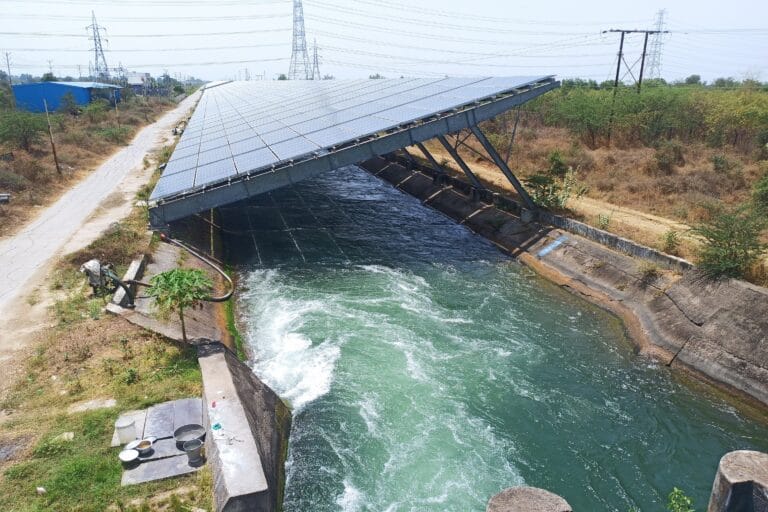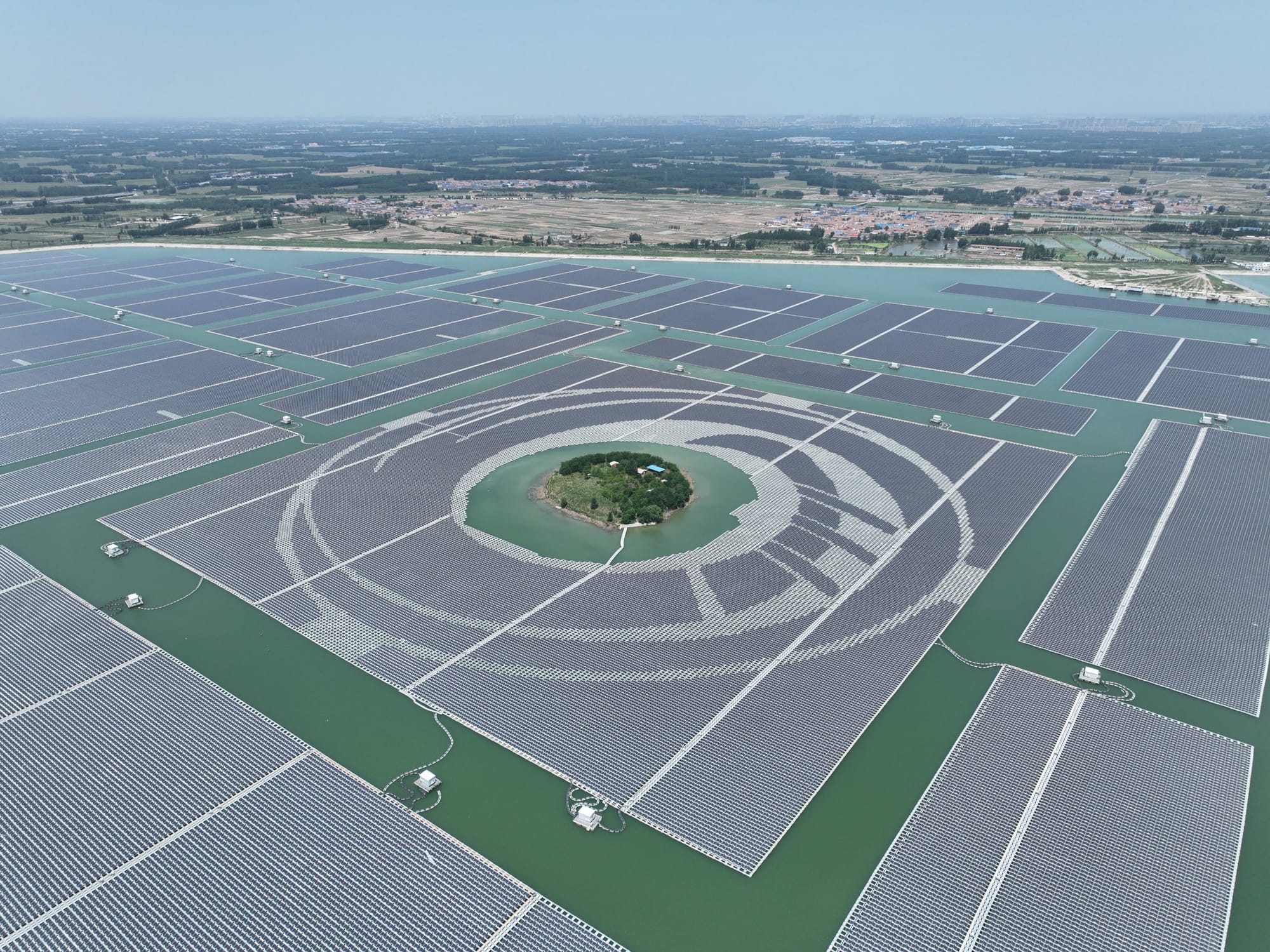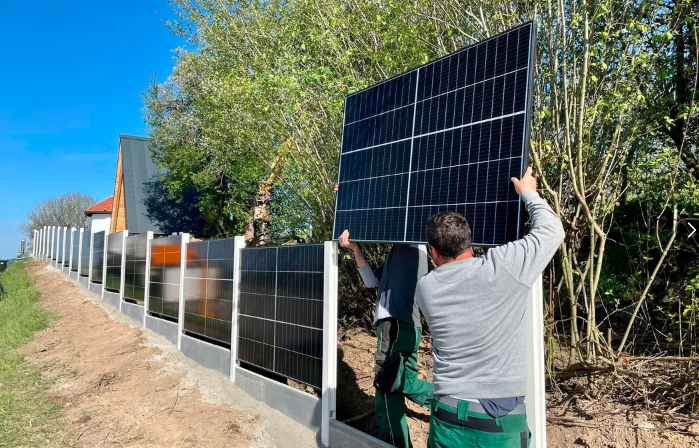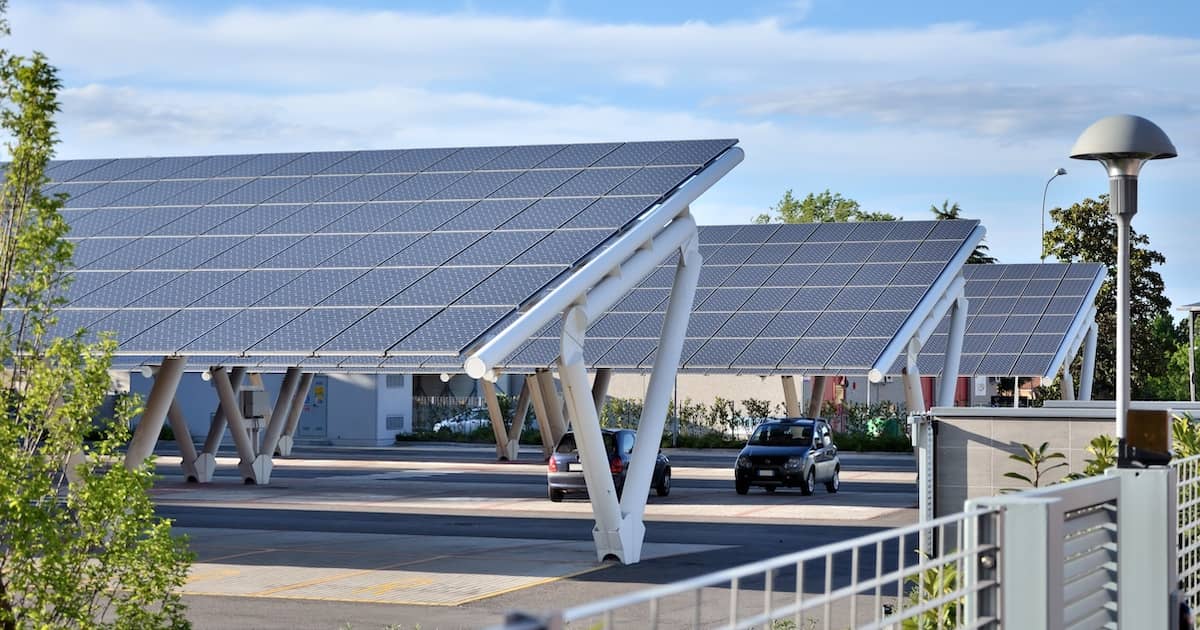Solar Farms in Creative Spaces
A collection of creative places solar has been deployed.

Sustainability is about being able to meet our world's needs without compromising future generations' ability to meet their own needs.
As an extension of this, I love the idea of implementing technology in our environment and making it look a part of nature without degrading its surroundings. I agree this is a tall ask for solar, but there are examples of solar being implemented in areas creatively and helping improve their surroundings.
Solar PV has an advantage; anywhere there is free space, solar can be installed. Absolutely, you won't be guaranteed high amounts of generation in the spaces, but the spirit is there. That's what's fun.
I will also talk about how solar can be built in a way that can improve and grow nature in its surroundings.
Canal Solar (India)

Canal Top Photovoltaic (CTPV) project plans to use the 63,546 km canal, the largest canal network in India, to its advantage. Doing so will allow the Indian state-owned Gujarat State Electricity Corporation Ltd (GSECL) to deploy 2200 MW of capacity and avoid using 11,000 acres of land.
You can find a brilliant article on this project here.
Dezhou Dingzhuang Floating Solar Farm

660,000 solar panels spread across 1151 acres of lake water, producing 320MW of power. Dezhou Dingzhuang floating solar farm is one of the largest of its kind. This project was designed to save land, reduce water evaporation and lower costs. Construction completed 2020, producing an estimated 2,200 GWh of power, which is enough to ~600,000 UK homes for a year.
Floating solar farms are a smart use of space, turning unused lakes and reservoirs into clean energy generators. They reduce land pressure, limit water evaporation, and even boost panel efficiency thanks to the cooling effect of water. As land use becomes more competitive, solar lakes offer a scalable, sustainable solution for powering the future.
Solar Roads

Installing solar cells on our roads and pavements is an interesting idea. You are able to utilise urban spaces and the infrastructure surrounding them. However, you can quickly spot a few issues with this system. It goes against nearly every system design rule.
Solar panels perform best when angled toward the sun, kept cool, and free from shade or dirt, none of which applies to a busy road surface. They’re flat, frequently covered by vehicles, and exposed to constant wear, grime, and damage. Maintenance is costly and complicated, and efficiency drops significantly compared to traditional rooftop or field-mounted arrays. While the concept is exciting, the practicality and performance just don't stack up, making solar roads more of a novelty than a scalable solution, at least for now.
Solar Fences

Where there is space, solar has a way. Solar fences cleverly combine renewable energy with boundary fencing, perfect when space is tight. They use double-sided (bifacial) panels, boosting efficiency by up to 10% by capturing sunlight from both sides, especially effective at sunrise and sunset. Each metre of fence can produce around 120–180 kWh per year, though vertically-mounted panels are slightly less efficient overall. Costing between £400–£1,000 per linear metre, they're pricier than traditional setups, but ideal for urban gardens, farms, or tight plots where every square metre matters.
Solar Carports

Solar carports make good use of wasted space by turning parking areas into renewable energy stations. Panels built directly above parked cars provide both shade and clean power, typically generating around 3,000–4,500 kWh annually per parking spot, enough to comfortably power a UK home each year. They’re not cheap, costing around £2,500–£5,000 per space, but if your business, supermarket, or office is tight on land, solar carports deliver a neat double benefit: clean energy production and sheltered parking.
How can solar improve nature and biodiversity?
Commonly, solar is built in a large and open space in a rural environment and lasts for 20-30 years. Due to government restrictions, solar farms are only allowed to be developed on grade 3b and higher land, mainly opting for brownfield sites. This is based on the Agricultural Land Classification (ALC) system.
| Grade | Description |
|---|---|
| Grade 1 | Excellent quality land with no limitations; suitable for a wide range of crops. |
| Grade 2 | Very good quality land with minor limitations affecting crop variety or yield. |
| Grade 3a | Good quality land; suitable for most crops but with moderate limitations. |
| Grade 3b | Moderate quality land; less versatile and mainly suitable for grass, or pasture. |
| Grade 4 | Poor quality land with severe limitations; best suited for grass or pasture. |
| Grade 5 | Very poor quality; rough grazing only. |
Source: Natural England Agricultural Land Classification
Solar farms can boost biodiversity, compared to where they are found. By carefully managing the land around solar panels, developers can create wildlife-friendly habitats that support pollinators, birds, and small mammals. Planting native wildflowers, grasses, and hedgerows between panels turns otherwise barren land into thriving ecosystems, attracting bees, butterflies, and beneficial insects. Done right, a solar farm can become a nature sanctuary, benefiting the environment as well as the community.
The farms don't scar the land either. These farms are developed in a way that they can return the land as they found it, and often with more biodiversity and land growth, compared to when they found it.




